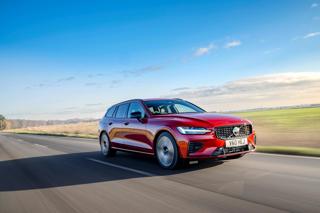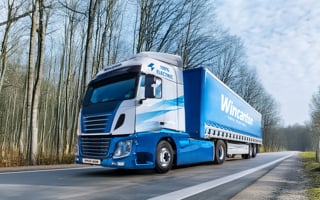The order books will soon open for Volvo's first hybrid car which combines more than 30 miles zero emissions capability with a powerful diesel engine for longer journeys.
The guideline price of the V60 Plug-in Hybrid is starting at between £45,000 and £50,000 in the UK, minus any government subsidy for electric cars (Plug-in Car Grant), with with a limited model year production run of 1,000 cars starting in November 2012.
"Our plug-in hybrid has received considerable attention since it was unveiled at the Geneva Motor Show in 2011. Now we're taking the next step by presenting the production model, which is graced with a distinctive profile featuring a spectacular silver colour, an exclusive interior and generous standard equipment," said Stefan Jacoby, President and CEO of Volvo Car Corporation.
After the initial batch of 1,000 cars for model year 2013, production of the V60 Plug-in Hybrid will increase to 4,000-6,000 cars as of model year 2014.
About 30% of total volume will go to Sweden and the other Nordic countries. Germany, Switzerland, Belgium, France, the Netherlands and the UK will have a share of between 5 and 15% each.
"We expect the order books to fill very quickly. The most discerning customers have many exclusive cars to choose between. But for anyone who truly wants to be in a league of their own behind the wheel of the most ingenious car in the world, there's only our V60 Plug-in Hybrid," said Jacoby.
The front wheels of the V60 Plug-in Hybrid are powered by a five-cylinder 2.4-litre turbo diesel producing 215 hp and maximum torque is 325lb-ft.
The rear axle is powered by an electric motor producing 70 horsepower. The electric motor is supplied with power from an 11.2 kWh lithium-ion battery pack installed under the floor of the load compartment.
The driver selects the required driving mode via three buttons that give the car three entirely different temperaments: Pure, Hybrid or Power.
- In Pure mode the car is powered solely by its electric motor as much as possible. If the battery pack has been recharged with electricity from renewable sources, its range is up to 32 miles with no carbon dioxide emissions from the tailpipe. The electric range varies with terrain, climate and driving style.
- Hybrid is the standard setting whenever the car is started. The diesel engine and electric motor cooperate to ensure optimal balance between driving pleasure and environmental footprint. CO2 emission (NEDC, mixed driving cycle for certification) is just 49g/km and it has a total range of up to 621 miles.
- In Power mode the technology is optimised to give the car the maximum possible power. The diesel engine and electric motor have a total power output of 215 plus 70 bhp and maximum torque of 325lb-ft plus 148lb-ft. The electric motor's quick torque delivery contributes to the car's acceleration from 0 to 62mph in 6.2 seconds.
The driver can choose to save battery power in order to drive on pure electricity later on, for instance in an urban green zone or in the heart of a city.
When Save is activated, the on-board system ensures that there is always sufficient charge for driving later in Pure mode. If necessary, the high-tension alternator will charge the battery pack so there is sufficient capacity for driving in Pure mode.
The aim is that the Save mode should ensure there is sufficient battery power for about 12.5 miles of driving on electricity alone.
The V60 Plug-in Hybrid can be recharged from a regular power outlet (230V/6A, 10A or 16A) at home or in a car park. Recharging time varies with amperage. A full charge with 10A takes 4.5 hours. This is cut to 3.5 hours with 16A, while a 6A charge takes 7.5 hours.
Pressing the AWD button activates the electrical four-wheel drive. Instead of the mechanical power transfer of conventional four-wheel drive, the central control unit distributes power between the diesel-driven front wheels and the electrically-driven rear axle. The electric four-wheel drive system has been designed to provide better grip when starting and when driving on slippery roads, for instance in snow or mud.
However, owing to the electric motor's lower power, torque to the rear wheels is limited and four-wheel drive is active up to 75mph.
When four-wheel drive is activated, the diesel engine operates continuously and the generator ensures that the charge level in the battery pack is sufficient to supply the rear axle with the necessary power.


















Login to comment
Comments
No comments have been made yet.